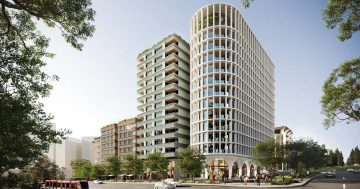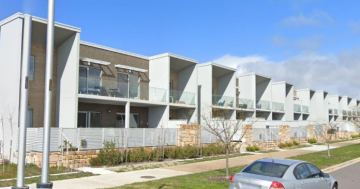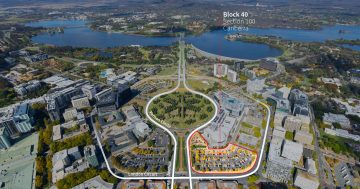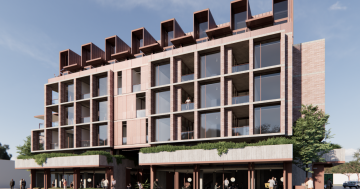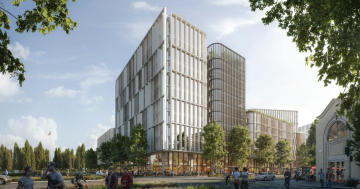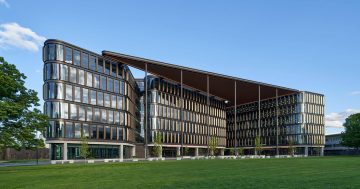
NewActon at night: Photo: AlecM.
As new developments shape the future of Canberra, we must ask if the settings are right.
Mixed-use precincts – places that mix residential, commercial and retail tenancies – are in particular demand. They reflect people’s desire for liveliness, pedestrian-friendly spaces, good facilities and a strong sense of neighbourhood.
However, mixed-use development in Canberra often falls short and does not provide the liveability people rightly expect. While the quality of the physical elements (buildings and streetscape) may be to blame, the non-physical ‘soft stuff’ – the activity, management and regulatory structures – also plays a significant role. Without it, a place has no life.
NewActon, Canberra’s first true mixed-use precinct, provides a useful pointer to doing the soft stuff well.
Founded on a philosophy of ‘civic architecture,’ the precinct’s public spaces were made for and belong to everyone. This spirit of openness and generosity has not only shaped the physical environment, but also set the agenda for people to fully take part in the life of the precinct – from every day to extraordinary events.
Fifteen years in the making, NewActon has four important lessons for those looking to live, shop, or operate in a mixed-use precinct.
1. Make sure there’s room for local creatives.
Creative people contribute to the cultural and social diversity and texture of the precinct.
From the beginning, the developer, Molonglo, purposely provided space for them in the heritage-listed former Hotel Acton buildings. Since then, strong entrepreneurial networks have formed, businesses have thrived, and a fertile creative energy is tangible throughout the precinct.
The long-term challenge is to ensure that affordable space for local creatives still is available, and it is not ceded to business-as-usual approaches to tenanting commercial space.
2. Focus on what happens at street level.
It is easy to get caught up with attention-grabbing architecture, but the street is where people gather to watch and be part of the spectacle of public life. However, for the street to work, good things need to be happening in the spaces that open out to it. Mocan & Green Grout is one of them.
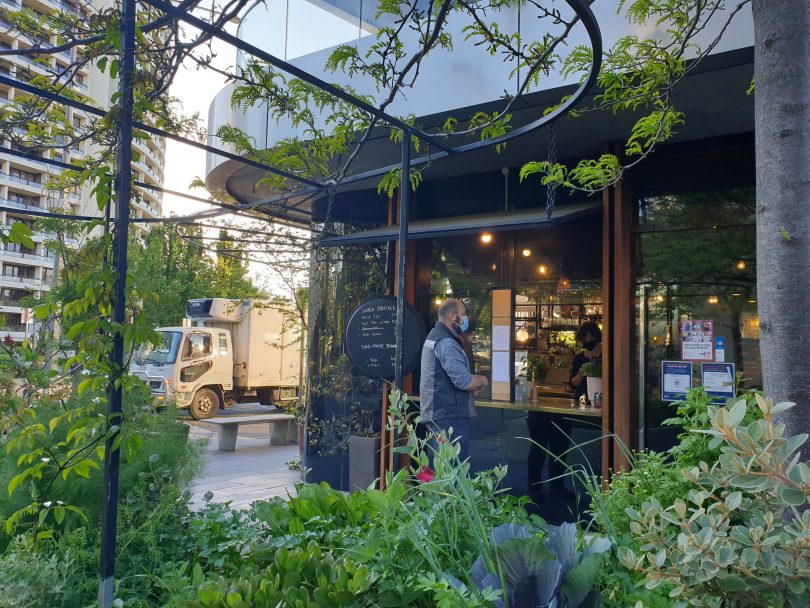
Mocan & Green Grout. Photo: Bronwen Jones.
Molonglo curated Mocan in partnership with two local creatives in 2011. Initially conceived as a bike shop serving coffee, it has evolved into a meeting place of food and conviviality set in a warm and highly crafted interior. Mocan provides ‘eyes on the street’, making the precinct safer and creating a place where everyone is welcome.
3. Regulators need to let life grow.
Mixed-use precincts are complex ecologies, and some current regulatory frameworks are simply not written with this type of precinct in mind.
For starters, the provisions of the existing Unit Titles (Management) Act do not specifically address multi-purpose and ‘community permeable’ buildings. In the spirit of civic architecture and wanting to avoid ‘gated’ public spaces, Molonglo resorted to putting in place an agreement between all three lessees of the Nishi building for the granting of easements to guarantee continued public access to the foyer and Grand Stair.
Sound regulations are also out of date.
Early in the development of NewActon, a couple of people complained about live jazz in the Eastern Courtyard on summer afternoons, with their double-glazed doors wide open. This led the Environmental Protection Authority to write to the café paying the band: “the Act does provide for penalties in cases where excessive noise occurs” (2014). And yes, a jazz band is over the ‘excessive noise’ threshold when measured on a nearby balcony, so the music was stopped for the whole community.
Other cities have sound laws that allow for the co-habitation of culture and residents in mixed-use precincts. This is particularly pertinent as the city becomes a mixed-use precinct and its music will soon be challenged as ‘excessive noise.’
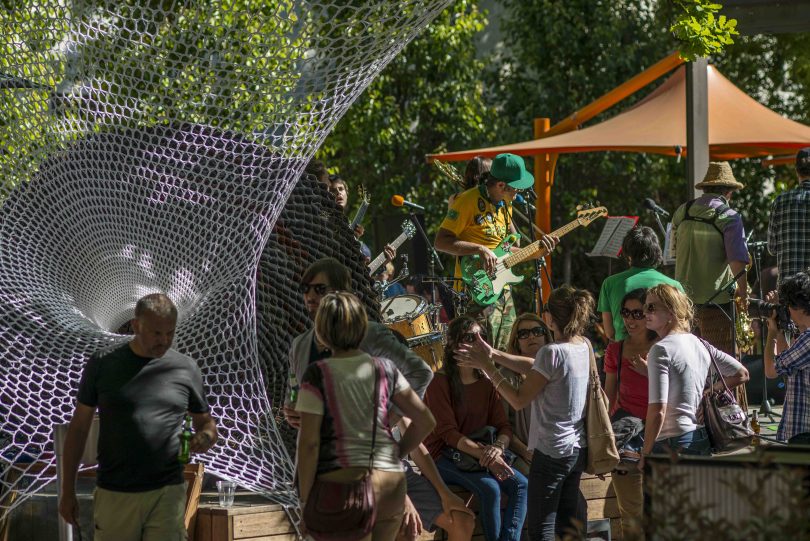
NewActon’s Eastern Courtyard. Photo: Martin Ollman.
4. There should be governance to maintain quality places and stimulate activity.
Developers often see their obligations end at the completion of the construction phase. This leaves new developments vulnerable and without the support to maintain the integrity of the buildings and public spaces or facilitate the partnerships required to create a cohesive community.
From the outset, Molonglo put in place governance to address these issues. This included appointing a series of curators to deliver a rich cultural program that immeasurably shaped the look and feel of the precinct. Collaborative in approach, the program enabled different stakeholders to work together and the spirit of civic architecture to flourish.

Western Courtyard and Nishi in NewActon. Photo: Bronwen Jones.
It is easy to overlook the intangible soft stuff, but NewActon provides a legacy to learn from. With these lessons learnt, we all have the choice of living, working or playing in strong and lively neighbourhoods.
Bronwen Jones FRAIA is an experienced and passionate design professional practising at the intersection of architecture and city-making. She is also the City Organiser for Jane’s Walk in Canberra and frequent guest juror for the Faculty of Arts and Design at the University of Canberra.












